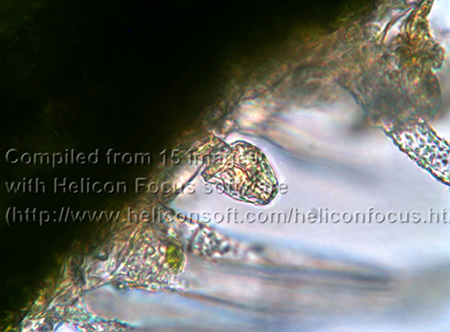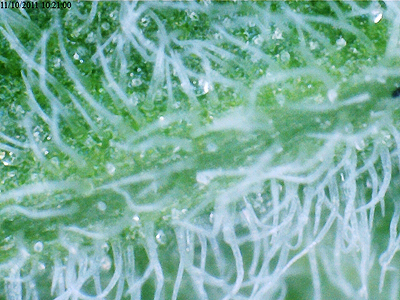
Catmint’s glandular hairs

A peltate glandular trichome
A forest of glandular and non-glandular hairs (trichomes) cover the catmint leaves that I am painting. I am painting the glandular hairs in detail for the Eden Project Florilegium archive so that in the future the work can be used to educate children about why cats love this plant and why it is of ethnobotanical importance to humans.
The hair that is important to cats and humans is the peltate glandular trichome – the small mushroom shaped object. It looks like a satellite station under the microscope – it is quite yellow compared to the long horn like hairs. This is because the trichome is turgid – there is content, it has its cellular contents intact (slime, water, and protein)… When cats rub against the plant, terpene, a chemical mixture gets released and sends them into heaven. (More details about this later.)
These glandular trichomes are microscopic and so I needed the botanist Dr Alistair Griffiths to help me find them. The above image he took summarizes our findings. The non-glandular hairs are rather easier to find and I’ve been looking at these at various different magnification levels whilst drawing, painting and taking snapshots of them.

Snapshot of non-glandular catmint trichomes
As I enter into the winter, I will get into the intricacies of painting this whole plant. I will be working with dusty green and purple mixes of paint (my specimen has purple flowers). I will post some water colour details in the future.
Notes:
Alistair Griffiths is Horticultural Science Curator at the Eden Project
We used the below as our main reference:
Catnip, Nepeta cataria, a Morphological Comparison of Mutant and Wild Type Specimens to Gain an Ethnobotanical Perspective
Scott Herron
Department of Biological Sciences, Ferris State University, 820 Campus Dr. ASC 2012, Big Rapids, MI 49307-2225; herrons@ferris.edu